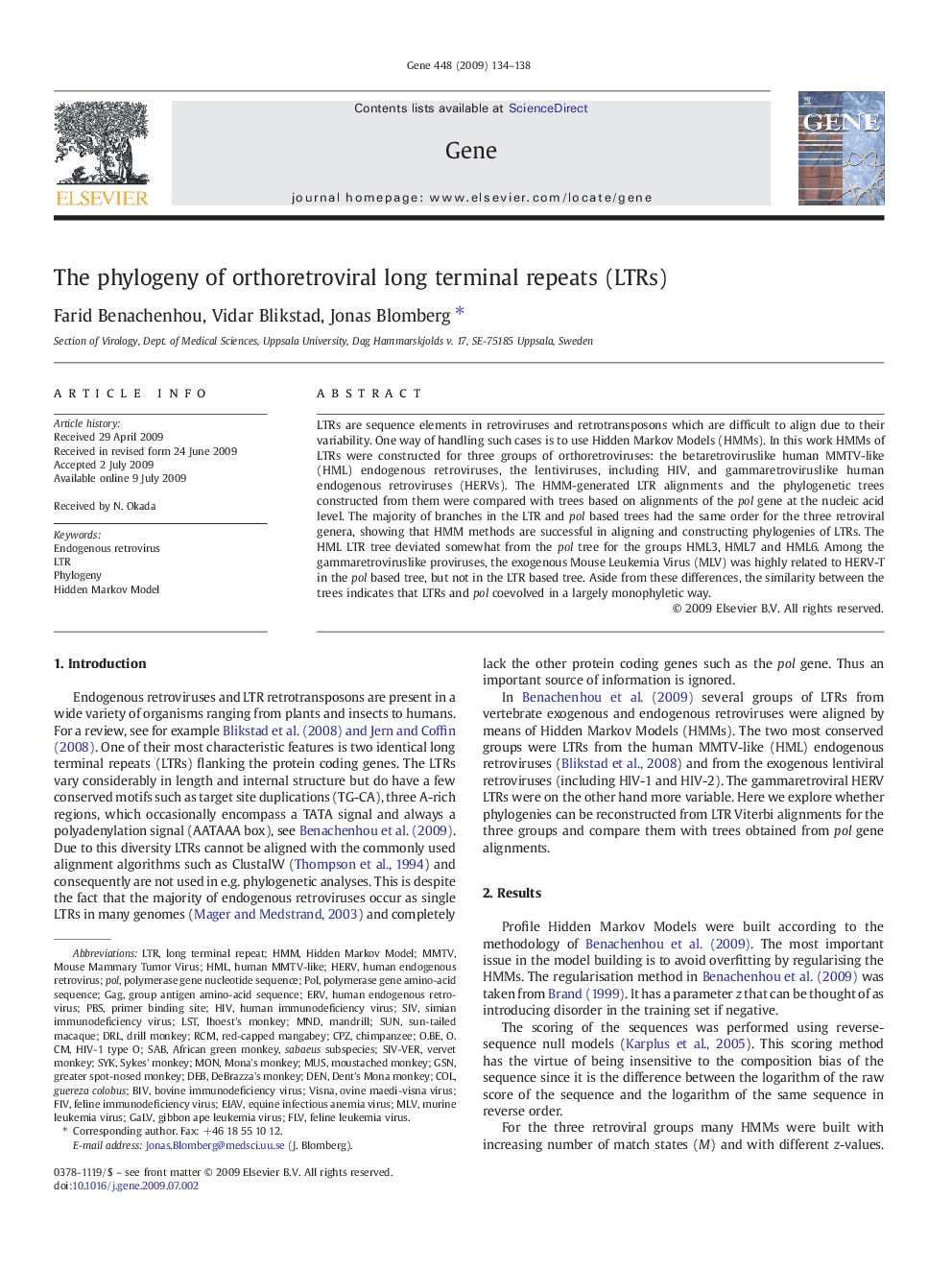| Article ID | Journal | Published Year | Pages | File Type |
|---|---|---|---|---|
| 2818756 | Gene | 2009 | 5 Pages |
LTRs are sequence elements in retroviruses and retrotransposons which are difficult to align due to their variability. One way of handling such cases is to use Hidden Markov Models (HMMs). In this work HMMs of LTRs were constructed for three groups of orthoretroviruses: the betaretroviruslike human MMTV-like (HML) endogenous retroviruses, the lentiviruses, including HIV, and gammaretroviruslike human endogenous retroviruses (HERVs). The HMM-generated LTR alignments and the phylogenetic trees constructed from them were compared with trees based on alignments of the pol gene at the nucleic acid level. The majority of branches in the LTR and pol based trees had the same order for the three retroviral genera, showing that HMM methods are successful in aligning and constructing phylogenies of LTRs. The HML LTR tree deviated somewhat from the pol tree for the groups HML3, HML7 and HML6. Among the gammaretroviruslike proviruses, the exogenous Mouse Leukemia Virus (MLV) was highly related to HERV-T in the pol based tree, but not in the LTR based tree. Aside from these differences, the similarity between the trees indicates that LTRs and pol coevolved in a largely monophyletic way.
